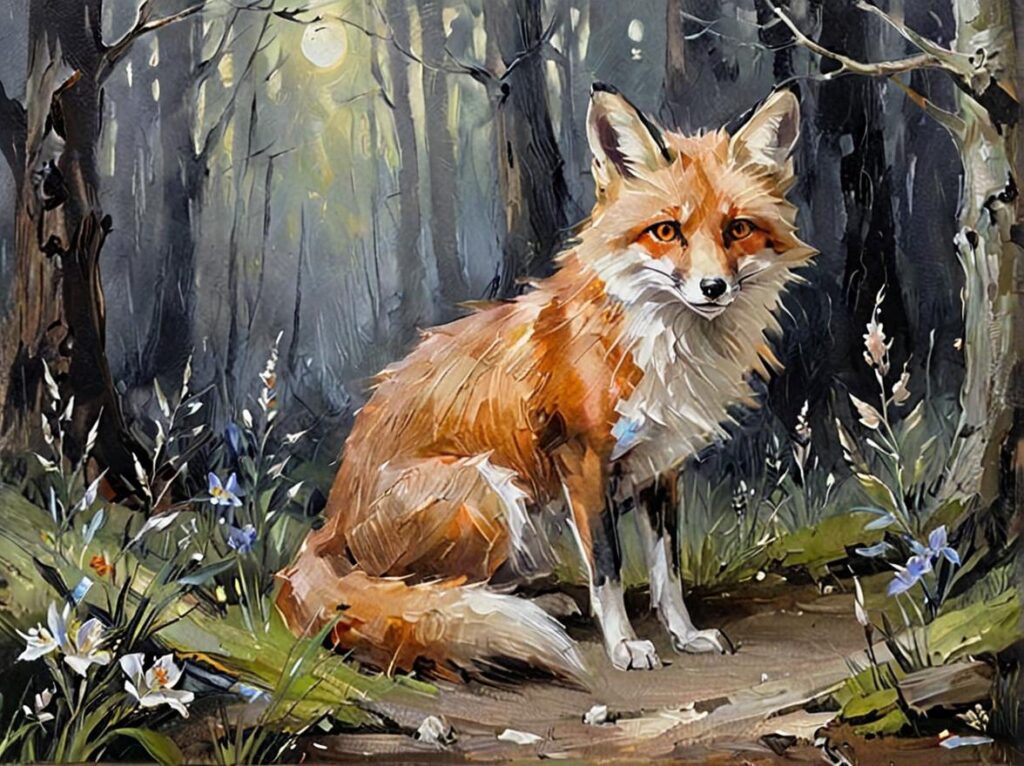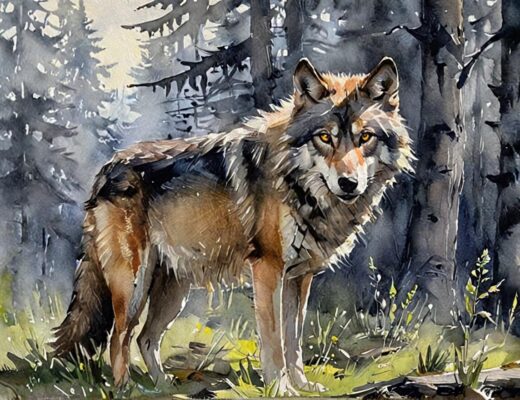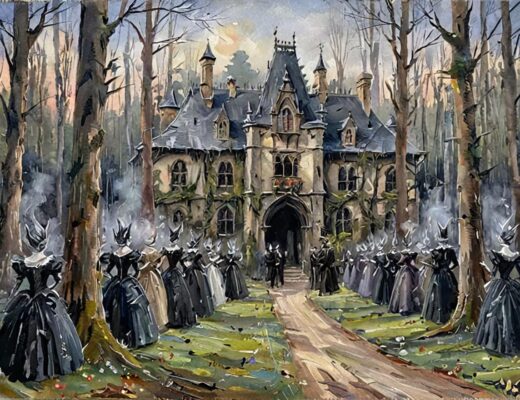We’ve all heard of dragons, unicorns, and mermaids. They’re the celebrities of the mythical creature world, hogging the spotlight in our most beloved fairy tales and fantasy novels. But what about the underdogs of folklore? The creatures that lurk in the shadows of obscure legends, waiting for their moment of fame?
Gather ’round, dear readers, as I share the tales of ten fascinating mythical creatures that deserve their place in the spotlight. These beings have haunted the nightmares and sparked the imaginations of our ancestors for centuries, yet somehow remain relatively unknown today.
1. The Nuckelavee (Scottish Folklore)
Imagine the most terrifying creature possible. Now make it worse. That’s the Nuckelavee for you.
This nightmare from the Orkney Islands appears as a skinless horse-like demon with a rider fused to its back. The rider has no legs, and both creature and rider share the same hideously deformed skin, raw and exposed with black blood visibly coursing through yellow veins.
When the Nuckelavee breathes, crops wither and livestock fall ill. Should you encounter one on a dark night, your only hope is to cross a stream—they cannot abide fresh water. Our ancestors didn’t just tell these stories to frighten children; they used them to explain blights, diseases, and droughts when science couldn’t.
2. The Psoglav (Slavic Folklore)
In the dark corners of Slavic lore lurks the Psoglav, a creature with the body of a man, the head of a dog, and—most bizarrely—metal teeth and a single eye on its forehead.
These beasts were said to dwell in caves filled with gold and precious gems. Their peculiar metal teeth could grind through stone, and they were rumored to have an insatiable appetite for human flesh. Next time you hear an unexplained sound echoing from a cavern, perhaps think twice before investigating.
3. The Boto (Brazilian Folklore)
Not all mythical creatures bring doom and gloom. The Boto from the Amazon are dolphin-like beings with the ability to transform into beautiful, well-dressed humans. They emerge from an underwater paradise called the Encante to attend human celebrations, where they’re known as the life of the party.
But beware their charm—Botos are notorious for seducing humans and luring them back to their underwater realm. If you ever spot someone wearing a hat at a riverside festival in Brazil, they might be hiding a blowhole!
4. The Kitsune (Japanese Folklore)
While fox spirits appear in many Asian cultures, Japan’s Kitsune deserves special mention. These magical foxes grow additional tails as they age, with nine-tailed Kitsune possessing near-godlike wisdom and power.
Kitsune can shape-shift into human form, often appearing as beautiful women. Some are benevolent tricksters, while others form deep bonds with humans. A Kitsune might repay a kindness with good fortune or punish an insult with clever, maddening pranks. The next time a strange woman with slightly odd mannerisms crosses your path, look closely for a glimpse of a fox tail.
5. The Poukai (Māori Folklore)
Before Peter Jackson brought massive eagles to Middle-earth, Māori legends told of the Poukai—gigantic birds so powerful they could swoop down and carry off full-grown humans.
These monstrous predators were said to nest high in the mountains of New Zealand, descending only to hunt. Some scholars believe the legend may have originated from the extinct Haast’s eagle, which was indeed large enough to prey on the flightless moa birds. Though smaller than the mythical Poukai, this real predator was still the largest eagle ever known.
6. The Selkie (Celtic Folklore)
Along the misty shores of Ireland and Scotland, tales are told of the Selkies—seal-people who shed their skins to become human on land.
Unlike the predatory mermaids who lure sailors to their doom, Selkies are often portrayed as gentle, melancholic beings. Many stories tell of human fishermen stealing a female Selkie’s seal skin, forcing her to remain human and become their wife. These tales invariably end with the Selkie finding her hidden skin years later and returning to the sea, leaving her human family behind.
7. The Grootslang (African Folklore)
In the deepest caves of South Africa dwells the Grootslang, a creature said to be as old as the world itself. With the head of an elephant and the body of a serpent, this beast guards untold treasures.
Legend says that when the gods created the world, they made a mistake by putting too much power into the Grootslang. To remedy this, they split the creature into two separate animals: elephants and snakes. But one original Grootslang escaped, becoming the progenitor of a small, hidden population of these ancient beings.
8. The Wolpertinger (German Folklore)
Picture the most improbable combination of animals you can imagine, and you might come close to the Wolpertinger. This Bavarian creature sports the head of a rabbit, the body of a squirrel, the antlers of a deer, and the wings of a pheasant—though descriptions vary wildly.
Unlike most creatures on this list, the Wolpertinger has become something of a tourist attraction, with taxidermied “specimens” created from various animal parts displayed in German hunting lodges and museums. After a few strong beers, who’s to say you won’t spot one in the Black Forest?
9. The Adze (West African Folklore)
By day, the Adze appears human, but at night it transforms into a firefly-like insect that hunts for blood. Once it finds a sleeping victim, it returns to human form to feed.
What makes the Adze particularly terrifying is that it doesn’t just drink blood—it consumes souls. Those who survive an Adze attack become witches themselves, spreading the curse further. Some traditional communities in Ghana and Togo still attribute mysterious illnesses to these vampiric creatures.
10. The Domovoy (Slavic Folklore)
Ending on a more benevolent note, the Domovoy is a house spirit in Slavic tradition who looks after the home—if treated with respect.
Appearing as a small, bearded man or taking the form of a household animal, the Domovoy performs chores while the family sleeps and warns of impending danger. But neglect your home or family obligations, and this helpful spirit becomes mischievous or even harmful. Many Slavic households still leave out small offerings of food for their Domovoy, maintaining a tradition that reaches back centuries.
These creatures remind us that folklore isn’t just entertainment—it’s a window into our ancestors’ fears, hopes, and attempts to explain the unexplainable. The next time you hear an odd noise in your home or spot a strange shadow from the corner of your eye, perhaps it’s not just your imagination, but one of these ancient beings paying you a visit.
What forgotten creatures haunt the stories of your homeland? The world of mythology is vast and deep, with thousands more legends waiting to be rediscovered.

Keep in mind thar oral tradition tends to bend and twist stories, some are told in this way others in that way. So if you know another version for any of these stories, I would be thrilled to hear about it!







